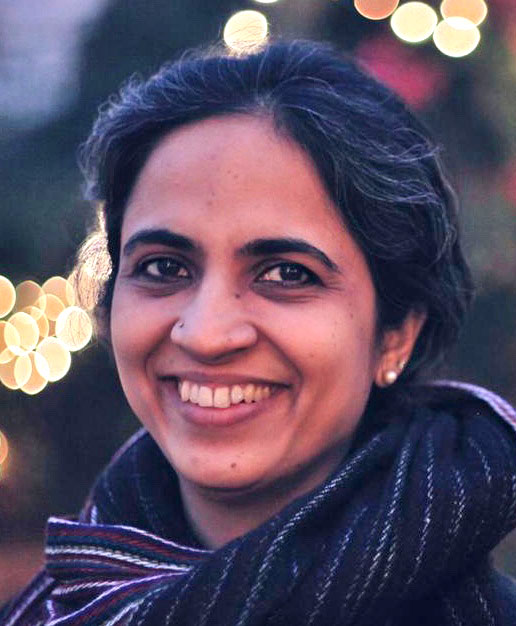
 On the 13th of March 2020, Jawaharlal Nehru University issued its first circular announcing curtailments on public gatherings in the wake of the COVID-19 pandemic. An exhibition of nearly 80 photographs by Sudharak Olwe opened the same day at the School of Arts and Aesthetics, as if by an irrepressible momentum, seeping through the cracks of an institutional vessel that was trying to close its doors. Titled Invisible Visible, and curated by Prof. Y. S. Alone, this exhibition was an austere retrospective of one of India’s most understated photographers par excellence. Vaskar Mech reviews and critiques the exhibition in his essay for PhotoSouthAsia, problematising how the works uncannily spoke volumes for India’s age-old caste based endemic of social distancing, a prescription that has now, with the pandemic, been adopted into civil behaviour the world-over.
On the 13th of March 2020, Jawaharlal Nehru University issued its first circular announcing curtailments on public gatherings in the wake of the COVID-19 pandemic. An exhibition of nearly 80 photographs by Sudharak Olwe opened the same day at the School of Arts and Aesthetics, as if by an irrepressible momentum, seeping through the cracks of an institutional vessel that was trying to close its doors. Titled Invisible Visible, and curated by Prof. Y. S. Alone, this exhibition was an austere retrospective of one of India’s most understated photographers par excellence. Vaskar Mech reviews and critiques the exhibition in his essay for PhotoSouthAsia, problematising how the works uncannily spoke volumes for India’s age-old caste based endemic of social distancing, a prescription that has now, with the pandemic, been adopted into civil behaviour the world-over.
Myriad facets of social distancing have been explored by the three contributors, refocusing the politics of differencing through caste and gender based occupations, inalienably ascribed at birth. The photographic works and theoretical positions force us to confront the diseased reality of our existence, an ignorance protected, a consciousness denied and a systemic blindness to the contradictions that have inhered (Alone, 2017). For his essay, Y. S. Alone has examined the photographer Arun Vijai Mathavan’s work on mortuary workers in Pune. The images are compelling in every sense, as the lack of infrastructure for a key social function is matched by the deplorable living conditions and social ostracism that the workers face. Extending the notion of social distancing that at the flip of a coin transitions into unseen intimacies, Bhavya Sah examines the sex worker as a subject of the lens. She places Olwe’s images of Kamathipura against those by Christina De Middel and Mishka Henner to raise questions about the intentionality of photojournalistic work, a perennial ethical concern that remains unresolved. The positioning of the sex worker on the margins of urban living, even as their core engagement is of intimacy with clients, skews the understanding of social distancing in a fundamental sense.
One may extend these positionalities to ask as to how the extreme marginalisation of the neglected migrant labourer, the oppressed sanitation worker or the sex worker configures in the pandemic context, as they face a double bind of distancing, by society and the pandemic at large? This is in irony of the fact that their professions and dwelling spaces do not allow for officially prescribed standards of distancing.
These images are a grim reminder of the long unaddressed struggles of the socially oppressed in India, those that continue to be protected by a State as long as they remain ignorant of their own marginalisation. They are those who in their inter-medial trappings of gender, poverty, and caste have been subjects of what Azoulay calls, the untaken photograph.[1] As the current world order reveals deep socio-political and economic fault lines, the images and writings in this issue attempt a redressal by jolting the viewer out of the privileges that have so far rendered invisible the pain and oppression of others.
_____
[1] Sabrina Alli, Ariella Aïsha Azoulay: It is not possible to decolonize the museum without decolonizing the world, in Guernica, 12.Mar.2020.
Copyright © 2021, PhotoSouthAsia. All Rights Reserved.
Guest Editor
PhotoSouthAsia is honored to welcome Suryanandini Narain as Guest Editor. Here Narain introduces her selected topic, which is addressed by her team of invited essayists:
Y.S. Alone: The Death of Ignorance: Photographs by Arun Vijai Mathavan
Bhavya Sah: Photographing Sex Workers: Understanding ‘Access’ and ‘Excess’ on the Margins
Vaskar Mech: Of Conditions and Concerns Made Palpable
 Photograph © Suryanandini Narain
Photograph © Suryanandini Narain
Suryanandini Narain is Assistant Professor of Visual Studies at the School of Arts and Aesthetics, Jawaharlal Nehru University, New Delhi. Her doctoral thesis addressed the feminine figure in family photographs from Delhi. A recipient of scholarships from the Ford Foundation, INLAKS and ICSSR, she has also been involved as an assistant editor for various Marg volumes. She teaches courses on Indian visual culture, photography, aesthetic theory, and critical writing. She also has M Phil and Doctoral research students working on graphic novels, digital feminism, documentary photography, queer theory, and bazaar art.
20 November